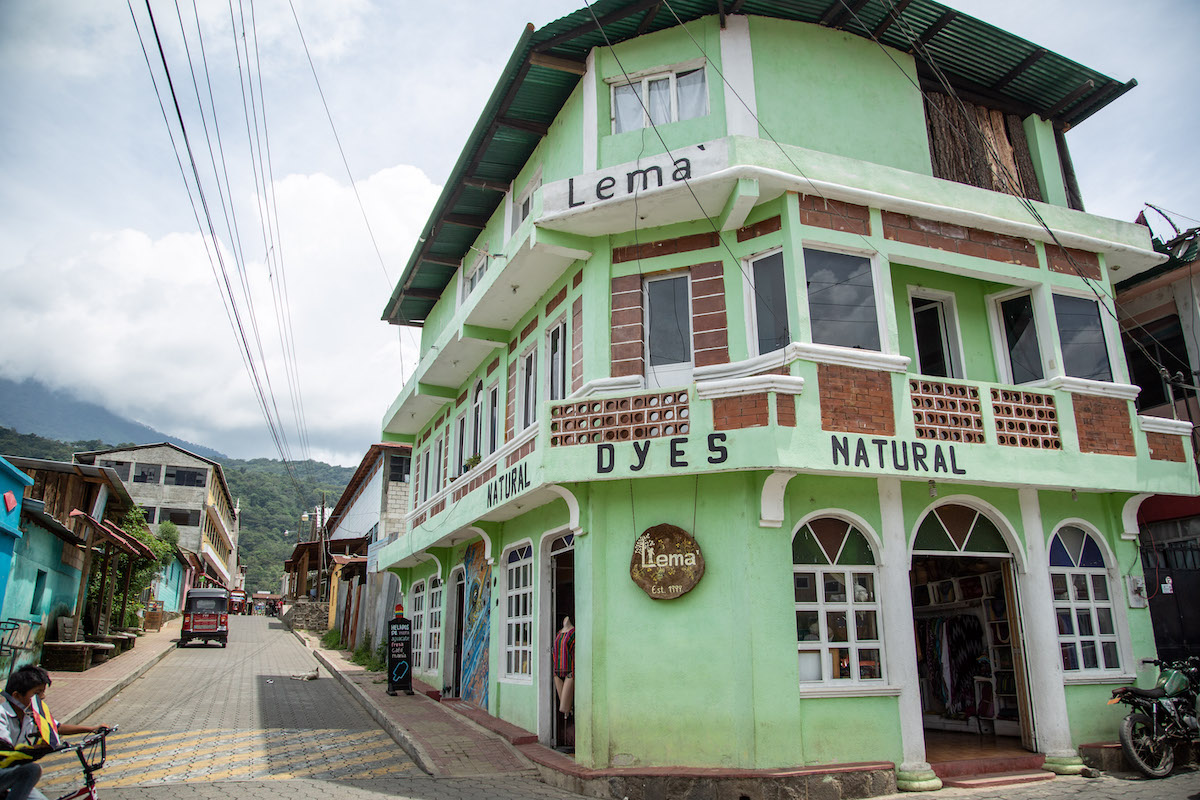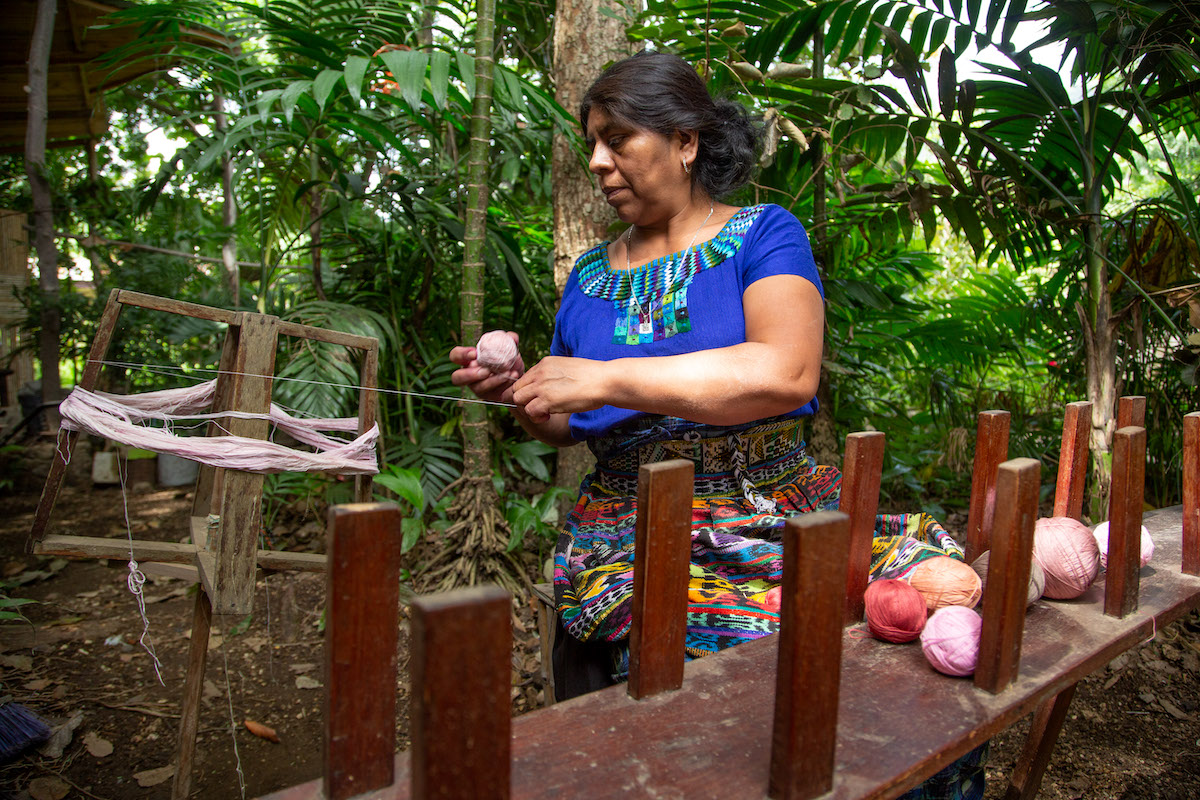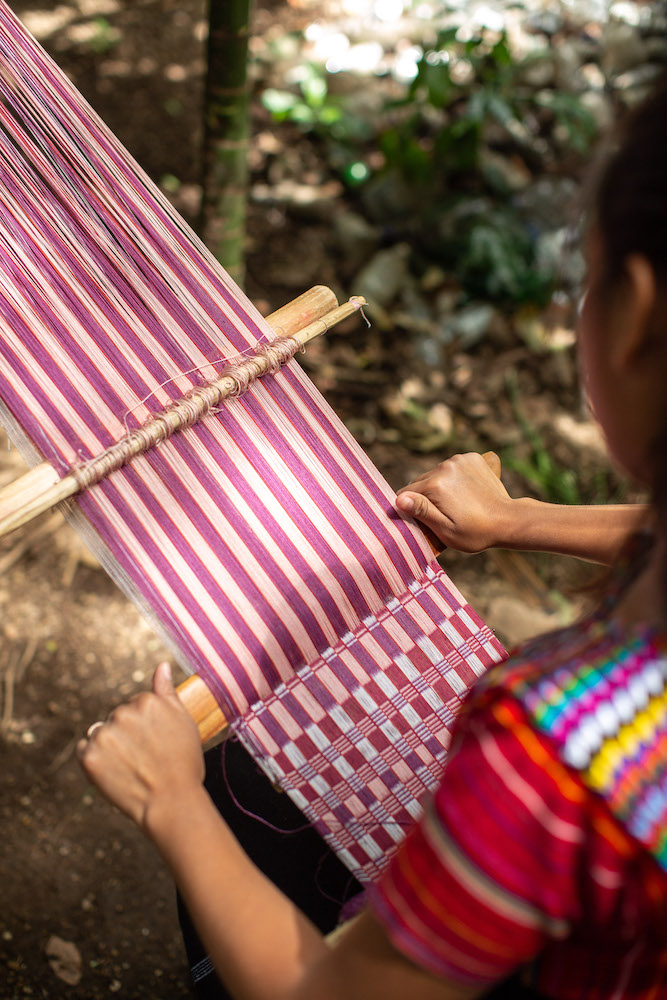4 Reasons to Explore Guatemala, the Place of Many Trees
By Bethany Ivie | October 3, 2019
If you want to learn the ancient art of backstrap weaving, there’s no better place than San Juan La Laguna, Guatemala. Actually, there may be no better place than San Juan period. Situated on the banks of beautiful Lake Atitlán, San Juan is a small Mayan community nestled in the midst of rolling green mountains and surrounded by glorious scenery including volcanoes and waterfalls. It’s an easy distance from Guatemala City and is one of many towns around the lake that welcome tourists. Most of the people who live here identify as Mayan and still follow the traditions of their ancestors, blending modern living and their ancient heritage seamlessly together.
Backstrap weaving is a long-standing tradition in Guatemala and was widely practiced by the ancient Maya and other indigenous peoples. Today, local artisans are keeping this traditional art alive and are spreading their knowledge to those who visit their hometown.

Though there are plenty of artisans in San Juan who are eager to teach you the trade, you’ll do best to head to Lema’ – a local store packed with more exquisite hand-woven shawls, scarves, table cloths and blankets than you can possibly imagine (or fit in your suitcase). Lema’ is owned and operated by Rosalinda Tay, an expert weaver and Mayan culture advocate. Rosa has 18 years experience in the textile industry and is one of the few artisans in Guatemala who produces cochineal insects, which produce a vivid scarlet dye when crushed. She keeps the traditions and methods of her ancestors alive by teaching visitors how to weave on a backstrap loom and how fabrics can be dyed with plants and insects.

When you visit her shop, you can also take a tour of her studio and her greenhouse where she produces the cochineal. She will walk you through the ins and outs of dying fabric with plants and insects as well as offer a weaving demonstration.
All weaving begins with a loom, a device that holds the thread and allows the artist to create fabric. On this loom are warp (the vertical threads in weaving that give the piece structure and tension) and weft threads (threads woven horizontally through the warp to provide a pattern). Unlike the common frame loom, a backstrap loom is flexible and mobile with one end of the warp tied around a pole, tree, pillar or other anchor, and the other end tied around the weaver’s waist. This allows the artist to easily control the tension of the fabric she is making by moving closer or farther away from her anchor. The full process of weaving is … extremely complicated and, frankly, you need an expert like Rosa to show you the process. But, in essence, it goes something like this:

Want to really learn how to weave? Visit Lema and set up a tour! You can find them at:
Cart is empty
Success!
Please be patient while we send you to a confirmation page.
We are unable to process your request. Please try again, or view common solutions on our help page. You can also contact our Donor Services team at 855.9HUNGER (855.948.6437).
Covering the transaction fee helps offset processing and administrative fees that we incur through taking payments online. Covering the transaction fee for each payment helps offset processing and administrative fees that we incur through taking payments online. Covering the transaction fee for each payment helps offset processing and administrative fees that we incur through taking payments online.
Success!
Please be patient while we send you to a confirmation page.
We are unable to process your request. Please try again, or view common solutions on our help page. You can also contact our Donor Services team at 855.9HUNGER (855.948.6437).
When you donate a gift to someone, you'll have the option to create a free card after your donation is complete.

A FREE gift will be sent to supporters who choose to give a monthly gift.
Covering the transaction fee helps offset processing and administrative fees that we incur through taking payments online. Covering the transaction fee for each payment helps offset processing and administrative fees that we incur through taking payments online. Covering the transaction fee for each payment helps offset processing and administrative fees that we incur through taking payments online.

A FREE gift will be sent to supporters who choose to give a monthly gift.